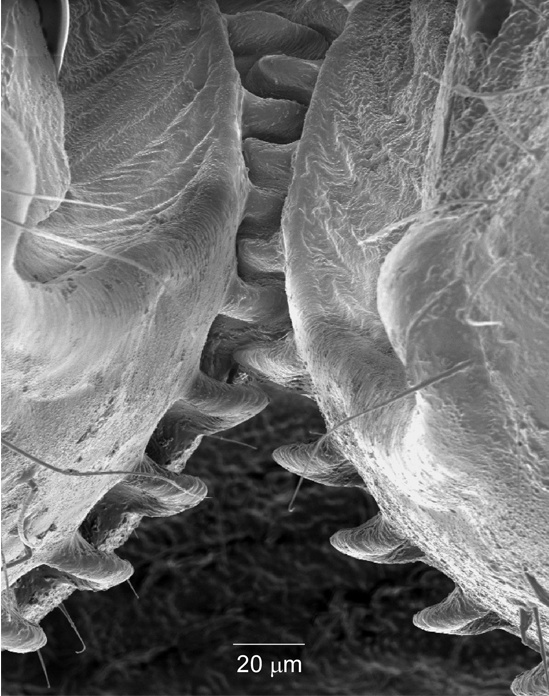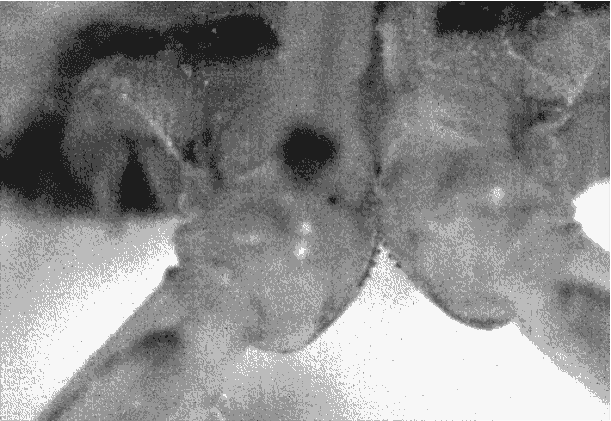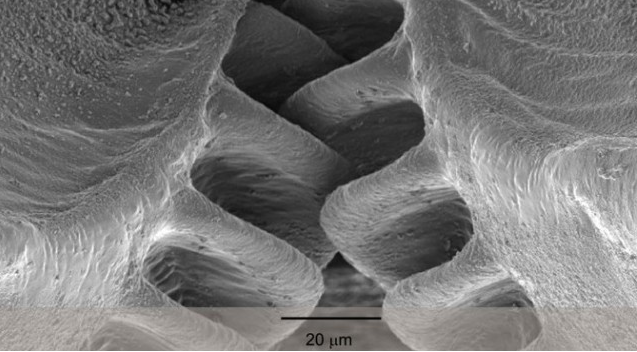Mechanical Gears Discovered on Planthopper Insect
https://reasonandscience.catsboard.com/t1412-mechanical-gears-discovered-on-planthopper-insect
http://www.sciencemag.org/content/341/6151/1254
http://www.evolutionnews.org/2013/09/mechanical_gear076801.html
The gears in question are found on a structure near the top of each of the insect's hindlegs, called the trochanter. Humans have a trochanter, which is near the top of the femur connecting to the hipbone. When people have hip replacement surgery, part of what is normally replaced is the trochanter. Arthropods have an analogous structure in their legs, which is rigidly attached to the femur, and articulates with the insect's version of the hip, called the coxa.
http://darwins-god.blogspot.com.br/2013/09/the-planthopper-nymph-has-gears.html
The planthopper nymph is a tiny insect with an incredibly fast jumping mechanism (it jumps in a few milliseconds with an acceleration of almost 400 g’s). What is perhaps most interesting are its gears that new research has uncovered. These micro marvels allow the insect to lock its legs together and synchronize their jumping motion with a precision of one three hundred thousandth of a second.


The first mechanical gear found in a living creature
http://www.extremetech.com/extreme/166493-evolution-delivers-the-first-mechanical-gear-found-in-a-living-creature
Gears and wheels are not very common in nature. They are mainly encountered at the nanoscale within the membranes of single cells. Here they act as rotary atomic pumps or motors to move ions and wield flagella. Recently however, biologists have discovered a precision gearing mechanism that is built and used by an insect known as a planthopper, which is similar to the grasshopper. The bug employs this device to mechanically synchronize its powerful jumping actuators so that they both fire within 30 microseeconds of each other.

https://www.youtube.com/watch?v=cq0Mf2pt2XA
If a gearing system only needs to deliver power in one rotational direction, or in one input-output direction, oftentimes certain optimizations can be made in the tooth structure to reduce friction and maximize power transfer. The pitch of the gearing on a worm drive, for example, makes it difficult or impossible for it to be back-driven. Similar optimizations have also been found in the planthopper. It is also worth mentioning that nervous control on the microsecond timescale is not completely off the table in the soft-matter world. It is known that some bats can distinguish nanosecond delays in the timing of auditory stimuli using neurally-based coincidence detectors (devices that amplify timing differences). Many times however, sensing can be done faster than commanding an actual physical motion.
Although the adult still can jump, the gears are only found in the young planthoppers.
https://reasonandscience.catsboard.com/t1412-mechanical-gears-discovered-on-planthopper-insect
http://www.sciencemag.org/content/341/6151/1254
http://www.evolutionnews.org/2013/09/mechanical_gear076801.html
The gears in question are found on a structure near the top of each of the insect's hindlegs, called the trochanter. Humans have a trochanter, which is near the top of the femur connecting to the hipbone. When people have hip replacement surgery, part of what is normally replaced is the trochanter. Arthropods have an analogous structure in their legs, which is rigidly attached to the femur, and articulates with the insect's version of the hip, called the coxa.
http://darwins-god.blogspot.com.br/2013/09/the-planthopper-nymph-has-gears.html
The planthopper nymph is a tiny insect with an incredibly fast jumping mechanism (it jumps in a few milliseconds with an acceleration of almost 400 g’s). What is perhaps most interesting are its gears that new research has uncovered. These micro marvels allow the insect to lock its legs together and synchronize their jumping motion with a precision of one three hundred thousandth of a second.


The first mechanical gear found in a living creature
http://www.extremetech.com/extreme/166493-evolution-delivers-the-first-mechanical-gear-found-in-a-living-creature
Gears and wheels are not very common in nature. They are mainly encountered at the nanoscale within the membranes of single cells. Here they act as rotary atomic pumps or motors to move ions and wield flagella. Recently however, biologists have discovered a precision gearing mechanism that is built and used by an insect known as a planthopper, which is similar to the grasshopper. The bug employs this device to mechanically synchronize its powerful jumping actuators so that they both fire within 30 microseeconds of each other.

https://www.youtube.com/watch?v=cq0Mf2pt2XA
If a gearing system only needs to deliver power in one rotational direction, or in one input-output direction, oftentimes certain optimizations can be made in the tooth structure to reduce friction and maximize power transfer. The pitch of the gearing on a worm drive, for example, makes it difficult or impossible for it to be back-driven. Similar optimizations have also been found in the planthopper. It is also worth mentioning that nervous control on the microsecond timescale is not completely off the table in the soft-matter world. It is known that some bats can distinguish nanosecond delays in the timing of auditory stimuli using neurally-based coincidence detectors (devices that amplify timing differences). Many times however, sensing can be done faster than commanding an actual physical motion.
Although the adult still can jump, the gears are only found in the young planthoppers.


